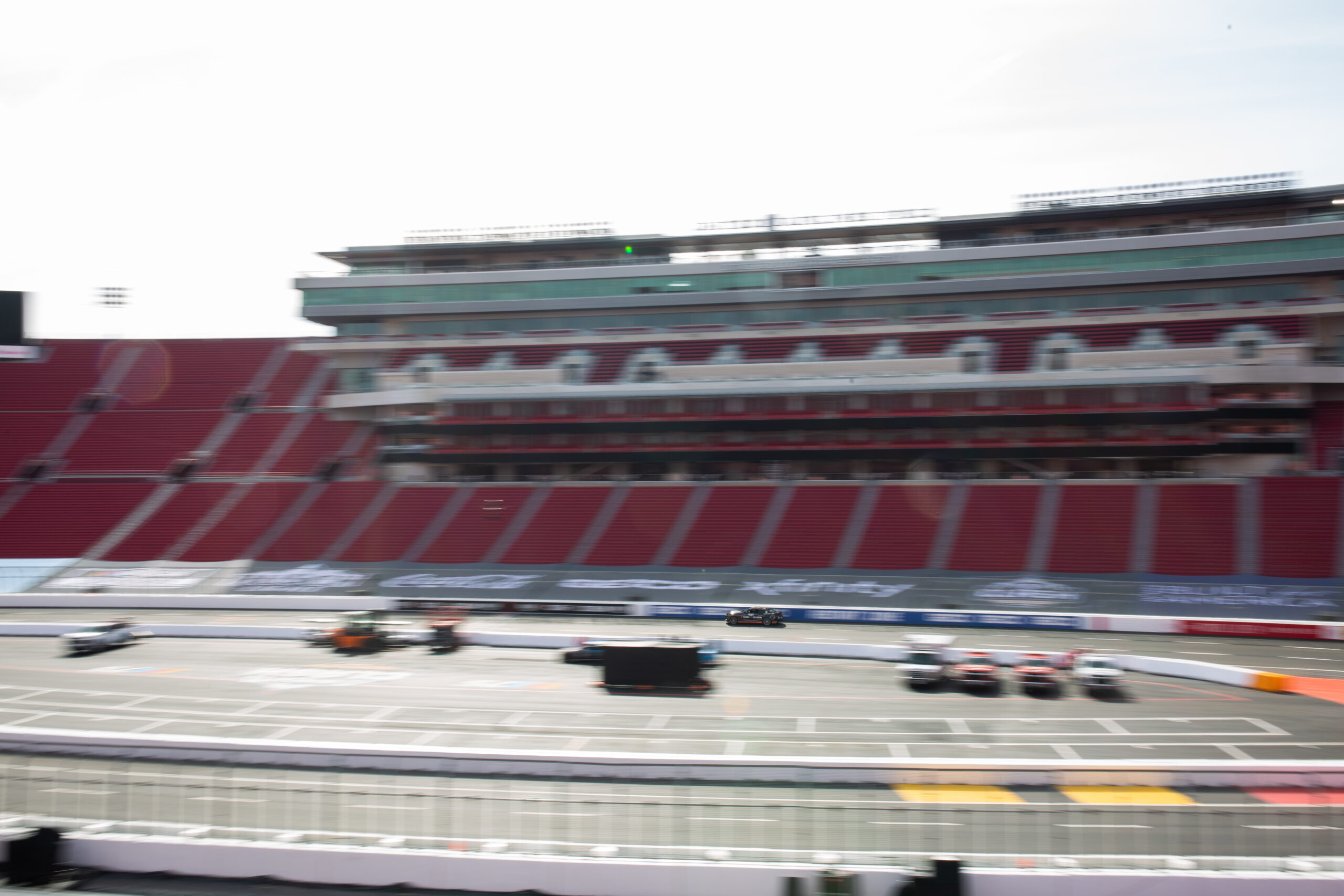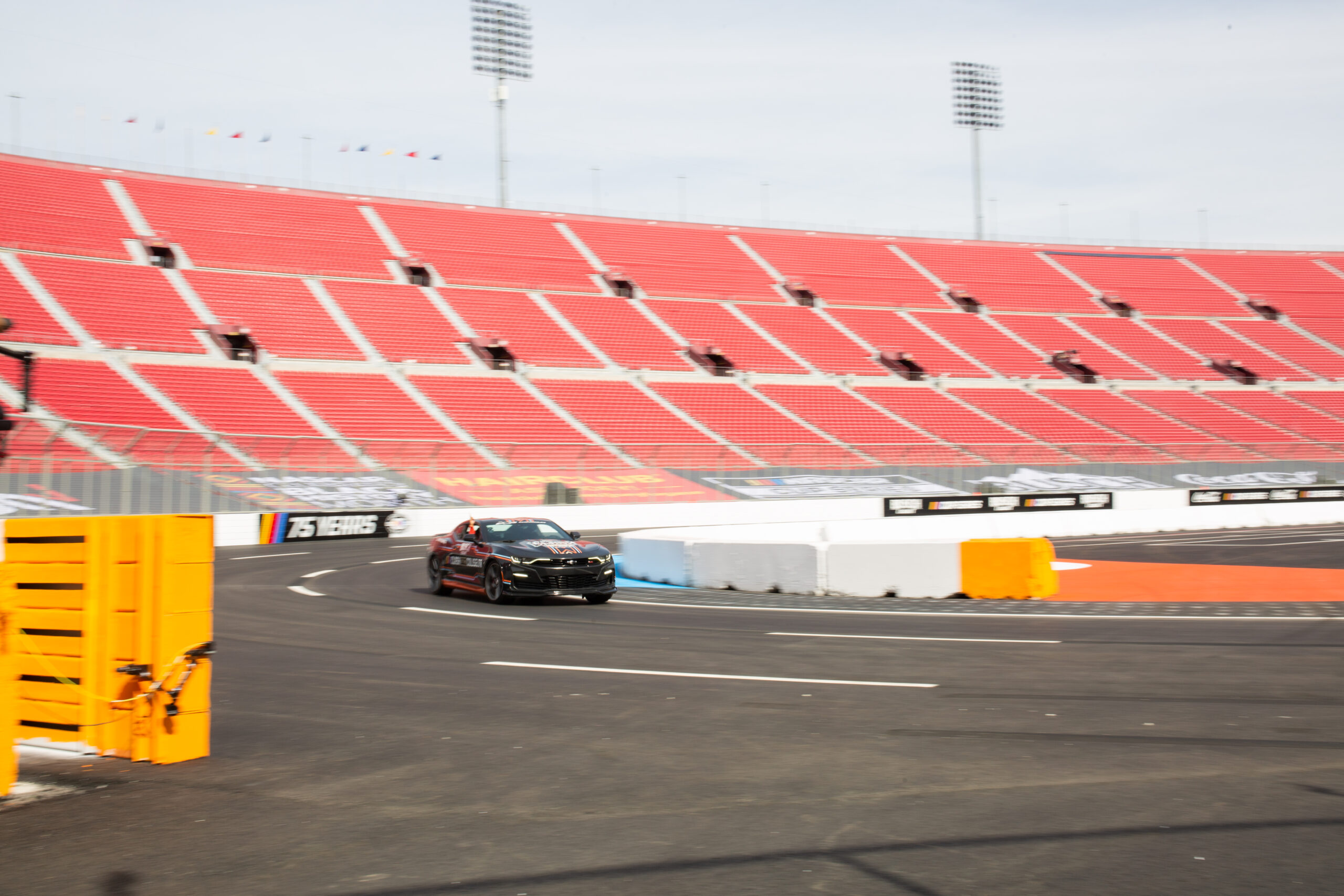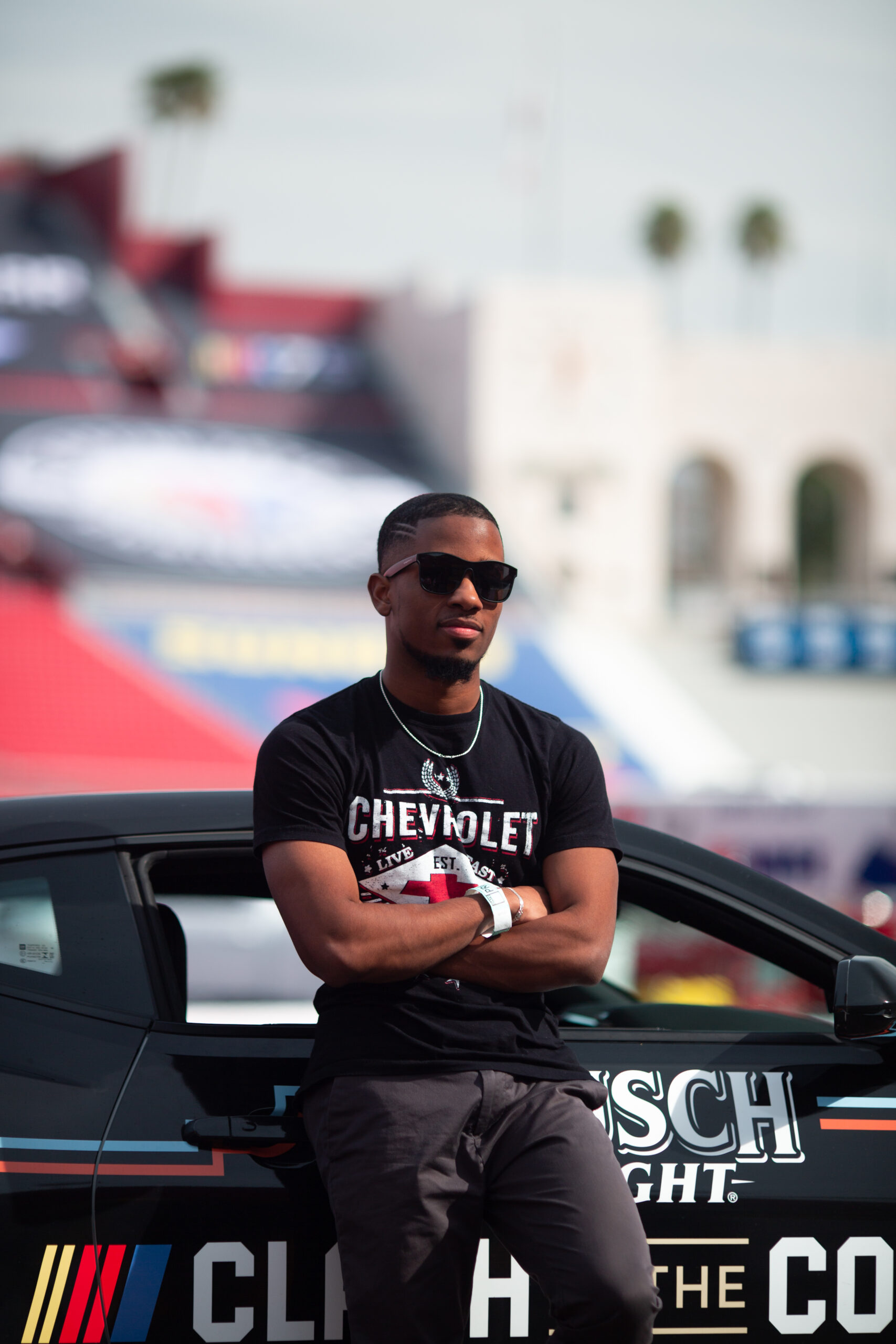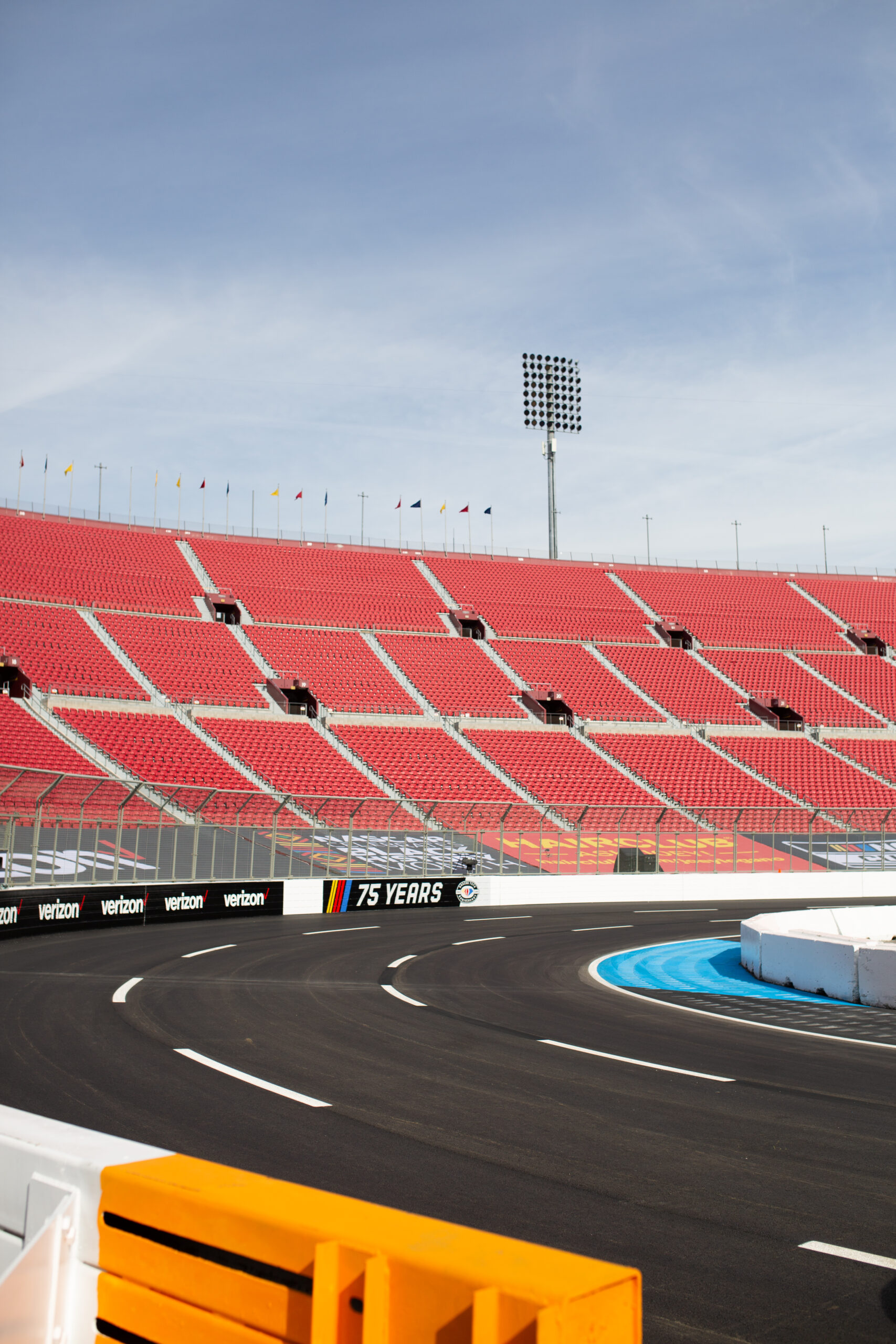

Last year’s Busch Light Clash at the Coliseum was a hit. It was unique, interesting, and gave the keys to NASCAR to a new demographic of people. It’s coming back this weekend for round two, with a year of development on the Next Gen cars, and that same spectacularly cool racing venue: the Los Angeles Memorial Coliseum. I was one of the first people to be on the track itself.
Put together by the folks at Race Service, an LA creative agency that hosts excellent car events at their headquarters in the heart of the city, I arrived at the Coliseum a few days before the race. Being an LA resident all my life, it’s a familiar site. But seeing the iconic Olympic landmark devoid of people and paved with fresh tarmac is one of the cooler things I’ve done as an Angelino. It got even cooler once I got to see the track up close at ground level, a rare privilege that won’t be afforded to anyone but track safety, teams, and drivers for the duration of the race weekend.


Paving the Coliseum is a huge undertaking, not least of which is avoiding permanent damage or change to the historic stadium. Underneath the tarmac are layers of temporary material which the track rests upon, mostly plastic sheeting called Visqueen and plywood. A four-and-a-half foot bed of dirt is spread across the plastic and wood, which the track is then paved onto. It’s a racetrack sandwich placed on the grass of the USC college football field.


And the surface is impeccable. It was green and devoid of rubbering in, but ready for the Chevrolet Camaro SS pace car that would be my glorious chariot for two laps. The pilot? Up and comer Rajah Caruth, a charismatic NASCAR Craftsman Truck and Xfinity series driver. As racing drivers are complete aliens, we discussed his career during the ride-along while I attempted to not to look at the SAFER barriers that lined the track. He is one of only five black drivers competing in NASCAR and got his start with competitive sim racing, breaking through in the 2018 season of the iRacing eNASCAR Ignite Series.

I cannot tell you how weird it is to be inside of a Camaro, with small block Chevy sounds reverberating off of the steep banks of the Coliseum, and seeing the iconic entryway arches in the windshield. It’s narrow and much faster than you might think. There’s a surprising amount of time to accelerate between the two turns, and several lines to choose from for entry and exit speed. It felt cramped and fast with a single Camaro. Imagining 23 Cup cars occupying the same space sounds like a rush.
The race is on for Sunday, and it’s sure to be as memorable as the last one. This, and the Chicago street circuit show real initiative from NASCAR to expand the sport beyond its good old boy past. If this is what we can expect from the future of top-flight American motorsport, we are all in for a renaissance of speed.
Got a tip? Email tips@thedrive.com